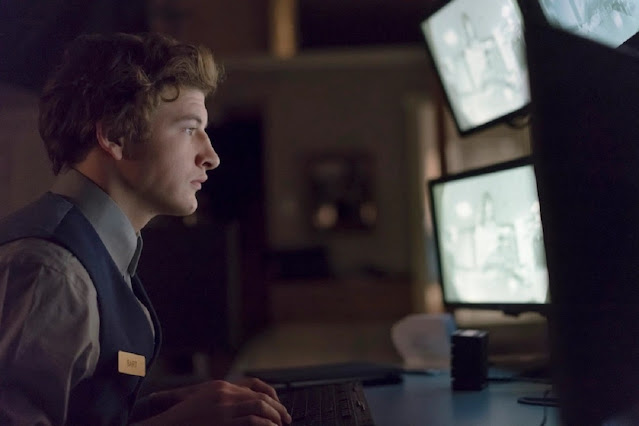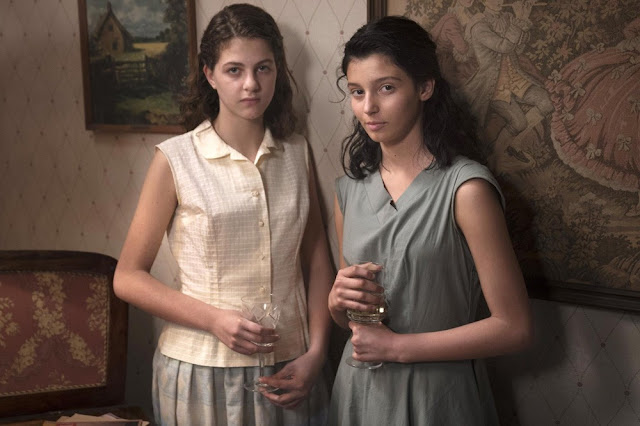Gualeguaychú: El país del carnaval / The Carnival
(Español / English)
Un docudrama in situ sobre los varones y el carnaval /
En esta suerte de docudrama en los lugares de los hechos seguimos a dos amigos y otros jóvenes que forman parte de las comparsas del carnaval de Gualeguaychú, con una cámara con la que el director Marco Berger se regodea en su back stage, con confusos límites entre realidad y puesta en escena y una dinámica que se torna repetitiva.
Reseña:
De un tiempo a esta parte, muchos cineastas están procediendo a tensar los límites del documental, interviniendo de manera ficcional o metaficcional el ámbito que abordan. Un ejemplo reciente es el confuso documental El agente topo, donde para hacer hablar a las ancianas residentes de un geriátrico, se las engañaba introduciendo justamente un infiltrado que se hacía pasar por residente.
En el caso del film de Marco Berger pareciera que se procedió a una operación parecida. Él presenta su película como un documental, aunque hace una advertencia en los títulos iniciales. Acaso habría que definirlo como “docudrama in situ”, ya que la trama sigue a dos personajes que son actores y que son (¿o hacen de?) amigos (Vilmar Paiva y Franco Heiler). Uno de ellos participa de las comparsas del Carnaval y el otro interviene más como espectador cercano. ¿Son de Gualeguaychú? ¿Efectivamente participan todos los años del Carnaval?
Hay un predominio de escenas dialogadas (con otros jóvenes que probablemente sean realmente comparsas), unas pocas estilo reportaje, algunas durante los desfiles y muchas, pero muchas, en los vestuarios, con los consabidos regodeos de primeros planos de colas y bultos típicos de Berger y algunos desnudos de los muchachos (chongos) y el backstage de cómo se van “montando”: maquillaje y con un vestuario que parece una mezcla de vedette y gladiador.
El resultado y hasta el objetivo de la película son por lo
menos confusos (ayudado por una toma de sonido directa que dificulta seguir los
diálogos) y cansador por sus repeticiones: ¿el director pretendió retratar un
ambiente o sustrato potencialmente homoeróticos en esos muchachos que visten
sus atuendos y desfilan con orgullo y sin conflictos o todo es resultado de la
intervención que él realiza y de sus proyecciones y marcaciones?
In this kind of docudrama in the places of the events we
follow two friends and other young people who participate in the comparsas of
the Gualeguaychú carnival, with a camera with which the director Marco Berger
delights in his back stage, with confusing limits between reality and staging
and a dynamic that becomes repetitive
Review:
For some time now, many filmmakers are proceeding to tighten the limits of the documentary, intervening in a fictional or metafictional way in the area they address. A recent example is the confusing documentary TheMole Agent, where, in order to make elderly residents of a nursing home speak, they were deceived by introducing an infiltrator posing as a resident.
In the case of Marco Berger's film, it seems that a similar operation was carried out. He presents his film as a documentary, although he makes a caveat in the opening titles. Perhaps it should be defined as "docudrama in situ", since the plot follows two characters who are actors and who are (or are they?) friends (Vilmar Paiva and Franco Heiler). One of them participates in the Carnival troupes and the other participates more as a close spectator. Are they from Gualeguaychú? Do they actually participate in the Carnival every year?
There is a predominance of dialogue scenes (with other young people who are probably really comparsas), a few reportage style, some during the parades and many, but many, in the changing rooms, with the usual gloating of close-ups of tails and typical Berger bundles and some nudes of the boys (chongos) and the backstage of how they are "riding": makeup and a wardrobe that looks like a mixture of starlet and gladiator.
The result and even the objective of the film are at least confusing (helped by a direct sound shot that makes it difficult to follow the dialogues) and tiring because of its repetitions: did the director try to portray a potentially homoerotic environment or substrate in those boys who dress? their outfits and parade with pride and without conflicts or is it all the result of the intervention that he carries out and of his projections and markings?
Perhaps the only clear thing is the concept of carnival as a
time of leave, in this case those taken by the young people who make up the
troupes, with great enthusiasm and pride.







Comentarios
Publicar un comentario
Mensajes sujetos a moderación